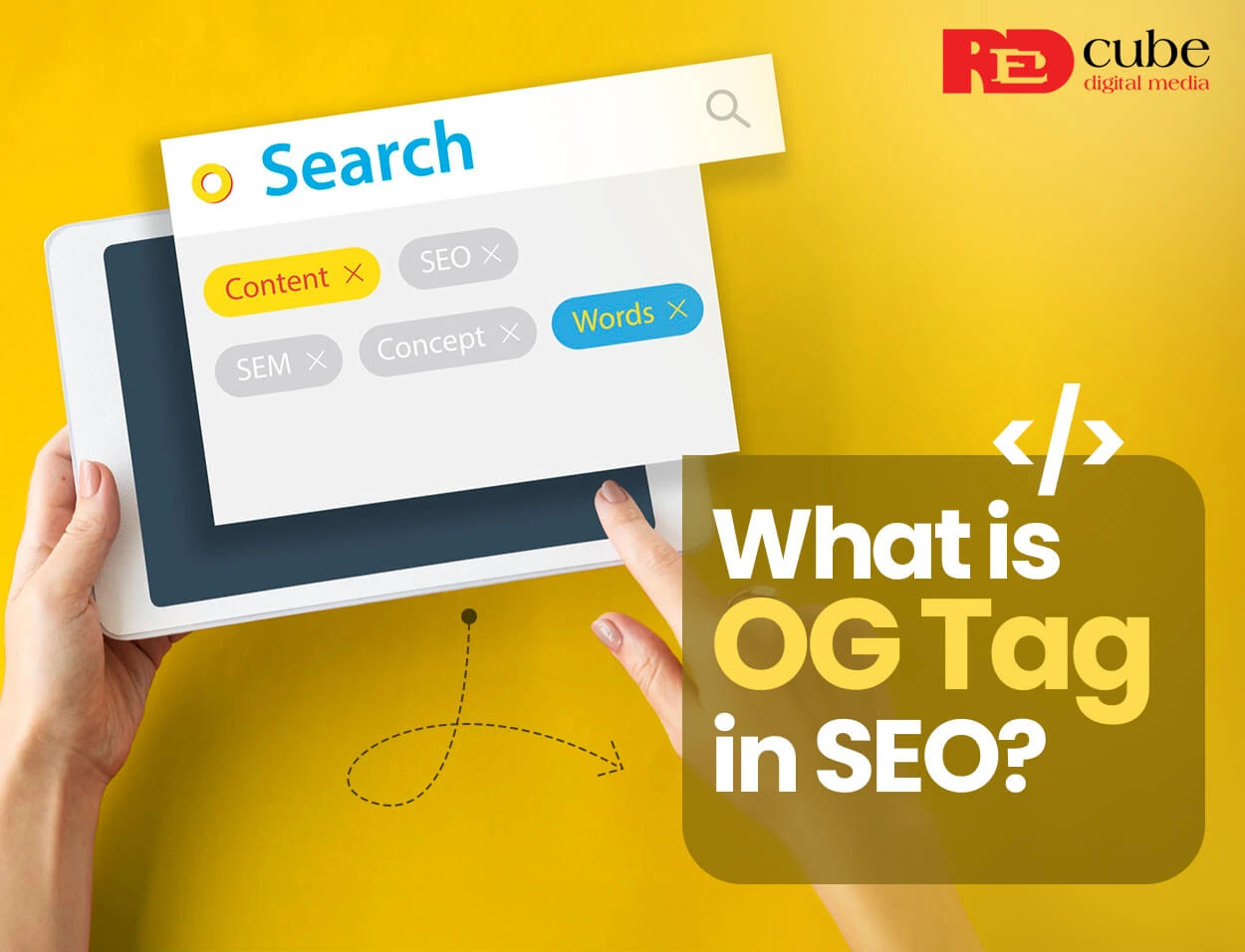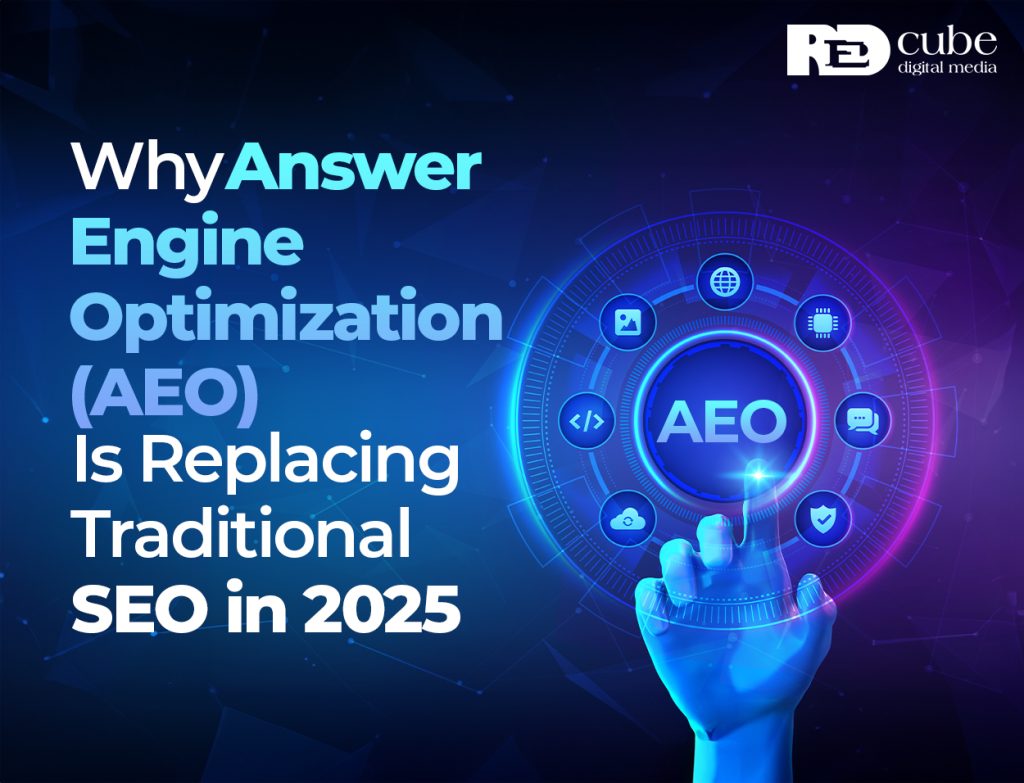Have you ever posted a blog post on WhatsApp or Facebook and been disappointed by the title or image that appeared? Open Graph (OG) tags serve as an excellent example of how every little detail matters in SEO.
These meta tags are the “face” of your content when it is shared on social media, yet they may have little to no direct impact on your SEO rankings. By identifying OG tags, you can raise your CTR, draw in more visitors, and ensure that your work receives the recognition it deserves.
What Are OG Tags?
OG tags are a set of meta tags introduced by Facebook to control how content is displayed when shared on social platforms such as Facebook, LinkedIn, and WhatsApp. These tags help you define:
- Title of the shared page
- Description
- Image thumbnail
- Type of content (article, video, website, etc.)
- URL to be shown
Example of OG Tag HTML Code:
<meta property="og:title" content="What is OG Tag in SEO - RedCube Digital">
<meta property="og:description" content="Learn how OG tags help improve content visibility and click-through on social media.">
<meta property="og:image" content="https://example.com/og-image.jpg">
<meta property="og:url" content="https://www.redcubedigital.com/seo/open-graph-tags">
Why OG Tags Matter for Your Website
While OG tags don’t influence Google rankings, they significantly impact:
1. Social Media Previews
- The title, description, and image pulled from OG tags make the shared post more appealing and clickable.
2. Brand Perception
- A well-formatted preview reinforces your brand’s professionalism.
3. CTR (Click-Through Rate)
- Clean previews with accurate snippets can increase CTR, especially on Facebook and LinkedIn
According to a 2022 study by Hootsuite, posts with customized OG tags receive up to 39% more engagement compared to those with missing or default metadata.
5 Best Practices for Using OG Tags
To make the most out of OG tags, follow these simple steps:
- Your blog posts and landing pages should always have OG tags.
- Align the content’s tone and focus with the original title and description.
- To prevent unclear thumbnails, use high-resolution photos (at least 1200 x 630 pixels).
- Use tools such as Twitter Card Validator or Facebook Sharing Debugger to test your tags.
- To prevent duplicate content problems, make sure URLs are canonical.
4 Tools to Help Implement OG Tags
You don’t need to code manually. CMS platforms and plugins make OG tag integration easier:
- Yoast SEO (WordPress)
- All in One SEO Pack
- RankMath SEO
- Shopify’s built-in SEO features
These tools allow you to customise OG settings per page or post.
How OG Tags Support SEO Goals Indirectly
OG tags help in traffic, visibility, and engagement, all of which support your entire SEO strategy. But they are not a direct ranking factor. The authority of your website will gradually increase as a result of the increased likelihood of links, shares, and references to pages with greater involvement.
Final Thoughts
In a congested digital landscape, using OG tags is a straightforward yet effective habit that may make your content stand out. Businesses who are serious about visibility, particularly on social media, must use OG tags.
FAQs
Q1: What is an OG tag?
A: An OG (Open Graph) tag is a type of meta tag used in the HTML of a webpage to control how content appears when shared on social media platforms. It defines elements like title, description, image, and URL preview.
Q2: What does OG stand for in SEO?
A: OG stands for Open Graph. While it’s not a core SEO term, it’s closely related to SEO strategies involving social media sharing and content visibility.
Q3: Are OG tags important for SEO?
A: Yes, OG tags play an indirect role in SEO. They enhance the appearance of shared links, which can lead to more clicks, better engagement, and increased traffic—all of which support your overall SEO goals.
Q4: Are OG tags useful for WhatsApp, Instagram and Facebook?
A: Yes, WhatsApp, Instagram and Facebook and other platforms recognize OG tags to generate link previews.
Q5: Do OG tags improve SEO ranking?
A: No, but they contribute indirectly by improving engagement and traffic.
Q6: Do I need a developer to add OG tags?
A: Not necessarily. Plugins like Yoast SEO allow you to manage them without writing code.



